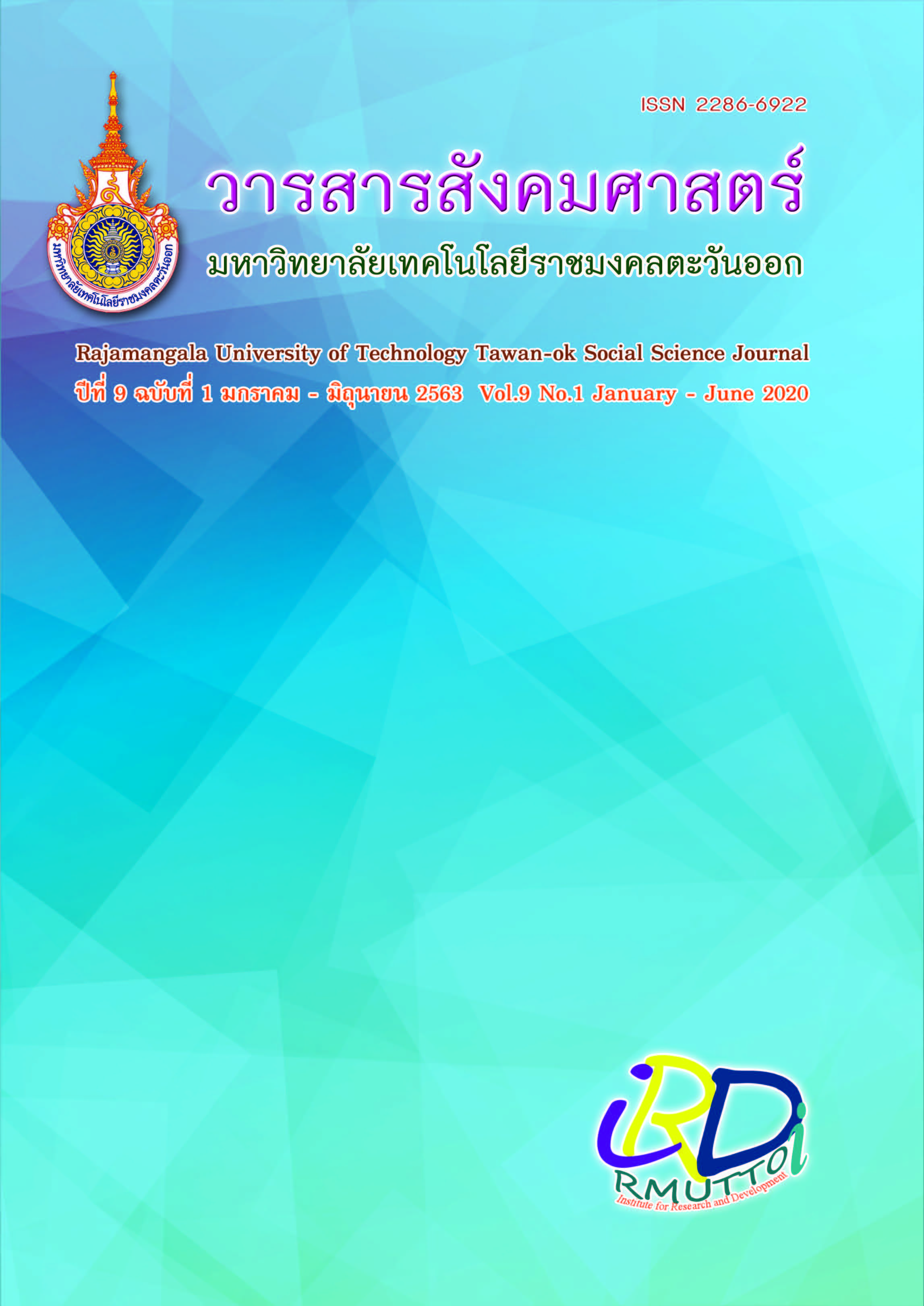The Situations and Ways of Development for Muslim Youths in Three Southern Boarder Provinces
Main Article Content
Abstract
The aim of this study was to illuminate situations and the ways of development for Muslim youths in three southern boarder provinces through synthesizing the knowledge from books and relevant research papers, attending academic talk sections, interviewing specialists and discussing with Islamic private school administrators and teachers. There are three presented contents of this study: 1) the situation of Muslim youths in three southern boarder provinces. 2) the model of development for Muslim youths in three southern boarder provinces. And 3) the ways for Muslim youths development in three southern border provinces. The results of this study revealed that situations of Muslim youth were worrying in various issues such as drug addiction, having sex before the age of consent, not practicing religious activities, lacking of knowledge and understanding on adjusting their life to live in present society and becoming a victim and puppet of insurgency in three southern boarder provinces. There are two primary ways of implementations needed to be accelerated. Firstly, to promote and support Muslim youths to do the suitable activities. In addition, to promote and give chances to youths who have done mistakes to change their behaviors along with raising development for them to be volunteer also push them to build volunteer connection among schools in their community. Finally, to promote participation of youths, family and community by requiring religious principles and it should be based on self awareness, family, community and society.
Article Details
References
เกษตรชัย เละหีม และ ดลมนรรจน์ บากา. 2553. การศึกษาวิถีชีวิตของเยาวชนไทยมุสลิมเพื่อเสริมสร้างสันติสุขในสามจังหวัดชายแดนภาคใต้. วารสารสงขลานครินทร์ ฉบับสังคมศาสตร์และมนุษยศาสตร์, 16(6).
ดลมนรรจน์ บากา และ เกษตรชัย และหีม. 2554. การศึกษาวิถีชีวิตเยาวชนไทยมุสลิมเพื่อเสริมสร้างสันติสุขในสามจังหวัดชายแดนภาคใต้. กรุงเทพฯ: สำนักงานคณะกรรมการการวิจัยแห่งชาติและมหาวิทยาลัยสงขลานครินทร์.
พินิต จิตติยาพันธุ์. 2550. อิทธิพลของกระแสโลกาภิวัตน์ต่อพฤติกรรมที่เบี่ยงเบนจากหลักการศรัทธาของเยาวชนไทยมุสลิมในอำเภอเมืองจังหวัดยะลา. วิทยานิพนธ์. มหาวิทยาลัยสงขลานครินทร์ วิทยาเขตปัตตานี.
เศรษฐศักดิ์ อรรคนิมาตย์. 2550. วันเวลาแห่งความหวาดกลัว การรับรู้ของเด็กต่อการดำเนินชีวิตในพื้นที่ชายแดนภาคใต้ของประเทศไทย. กองทุนเพื่อเด็กแห่งสหประชาชาติ.
สำนักงานส่งเสริมสวัสดิภาพและพิทักษ์เด็ก เยาวชน ผู้ด้อยโอกาส คนพิการและผู้สูงอายุ. (2550). แนวทางการปฏิบัติงาน โครงการสร้างกระแสการพัฒนาคนและสังคมในระดับจุลภาค. กระทรวงการพัฒนาสังคมและความมั่นคงของมนุษย์.
อมรวชิช์ นาครทรรพ และคณะ. 2550. รายงานโครงการวจิ ัยและพัฒนารูปแบบการจัดการเรยี นรทู้ ้องถิ่นในสามจงั หวัดชายแดนภาคใต้. ภายใต้การสนับสนุนของสำนักงานกองทุนสนับสนุนการวิจัย (สกว.).
AMRON. 2553. การประชุมวิชาการนานาชาติเครือข่ายองค์กรวิจัยมุสลิมแห่งอาเซียน ครั้งที่ 1 “มุสลิมในประเทศอาเซียนกับการศึกษา: เปลี่ยนแปลงจากภายในผ่านการศึกษา” วันที่ 2-3 ตุลาคม 2553 ณ มหาวิทยาลัยวลัยลักษณ์ จ.นครศรีธรรมราช.
Hakim M. Rashid 1988. The Socialization of Muslim Children in America: Towards a Conceptual Framework. The American Journal of Islamic Social Science Vol.5 No.2 (pp.205-217).


